Written by Beverley Lennon
Have you ever wondered about the indigenous tribal people living in some of the most remote and secluded corners of Indonesia?
While we are busy scrolling through our social media feed, they are busy hunting for tonight’s dinner, building their tree-homes, tattooing themselves, dancing and chanting as they celebrate traditional rituals they still practise today.
What if we say, you can actually visit some of them?
Tips:
1. Some tribes can be dangerous to visit, so you might need a guide!
2. Given the difficult logistics of reaching the tribes, most organised tours are spread over 7-10 days.
3. Some are accessible on a day trip or shorter tours.
4. Please ensure that you are in proper physical conditions for all sorts of trekking and hiking involved. Consult your doctor if necessary.
5. Please note that very often, tour rates published online differ from rates quoted for local Indonesians, so you might want to contact the operators directly to look out for their current deals!
Our safety level scale rates the tribes from 5/5 (the safest) to 1/5 (the least safe) to visit.
Read More:
13 strange rituals and traditions in Indonesia that will fascinate and spook you
25 exotic natural, cultural and traditional attractions in Flores you have never heard of
1. Pregnant women are sent to the forest to give birth – Korowai Tribe
In a world where babies are now welcomed with the luxury of a warm filled bathtub, it is indeed captivating to learn about the Korowai Tribe – one where pregnant women are sent alone, far from their homes and deep down into the jungle to give birth all by themselves!
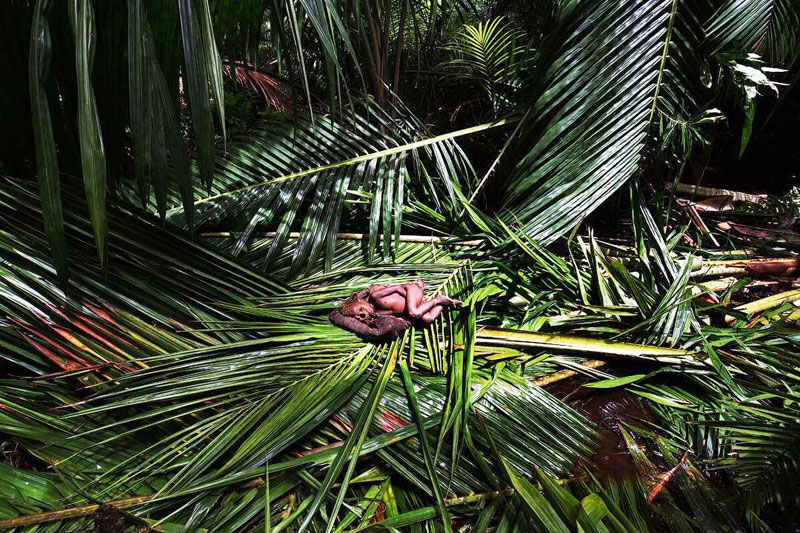
These hunter-gatherers in West Papua have been living up in treehouses for centuries in order to avoid attacks from rival clans, and it is only in the 1970s that they got to know about the existence of other people like us.
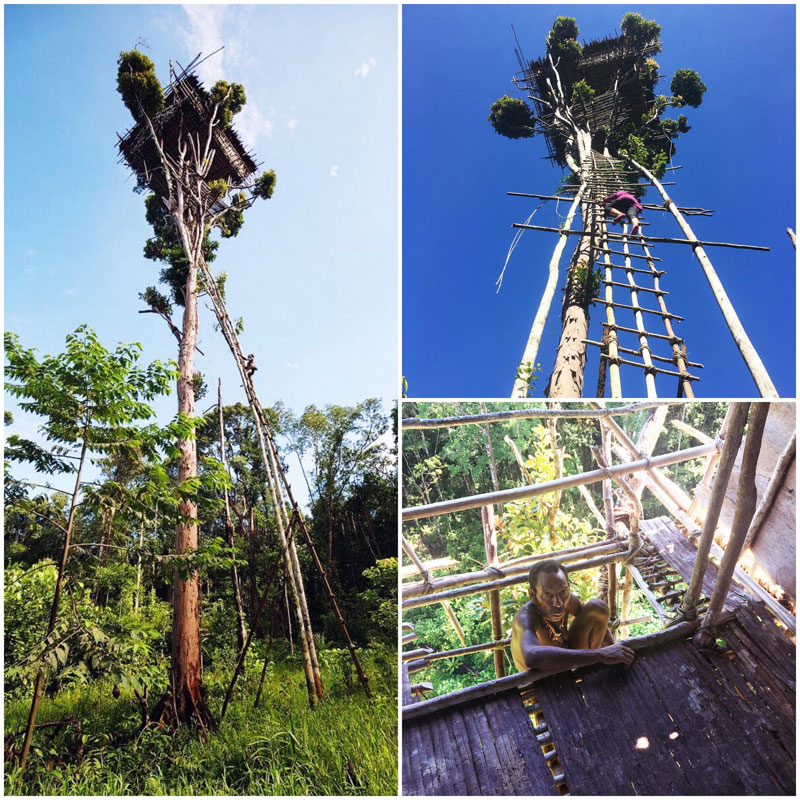
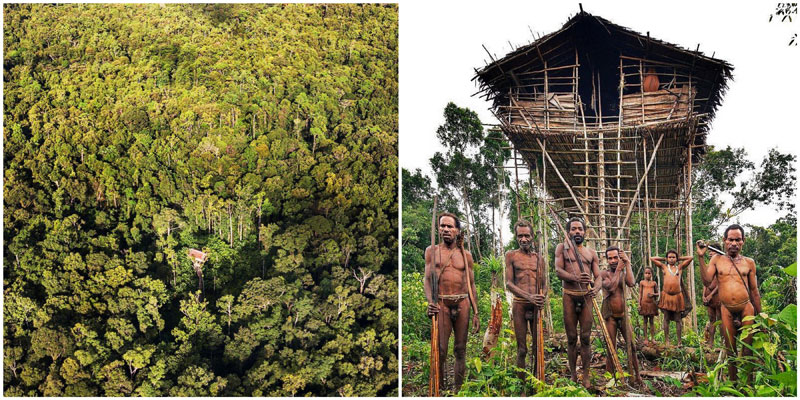
Korowai Tribe value religion and believe in the existence of spirits as well as reincarnation; they pay special tribute and respect their ancestors by celebrating with occasional feasts.
As Korowai people don’t have medication that can cure jungle diseases, their life spans are often short, so the village has very few elderly (most of them live till middle age) but expect lots of kids!
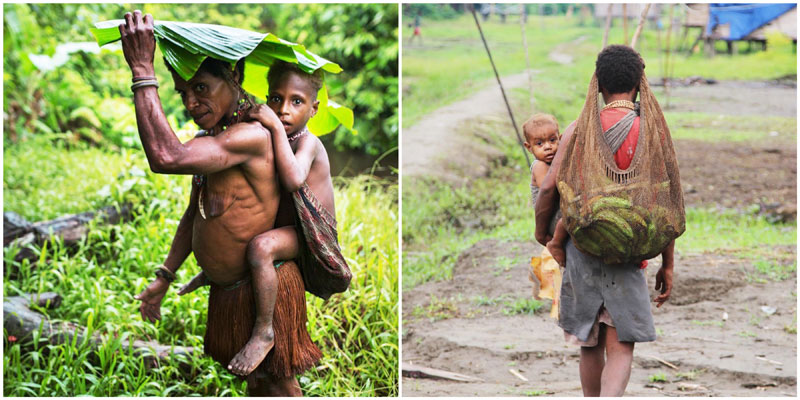
Living with little knowledge about the outside world, it has been said that the tribe is no longer practicing cannibalism (only for ritual purposes) and has sadly become attractions for the crowds of sensation-hungry tourists.
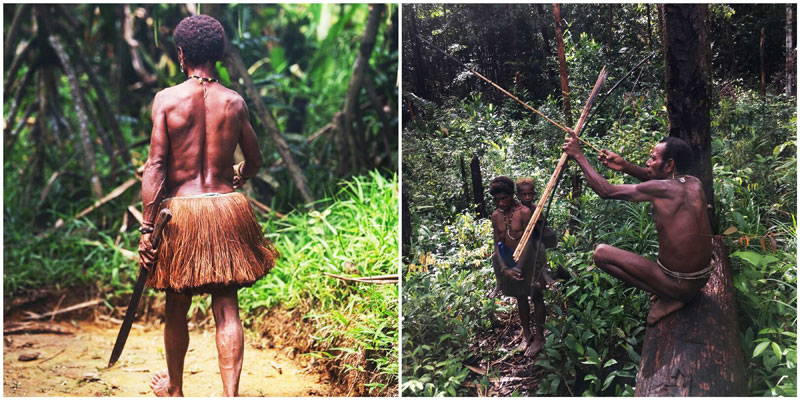
On an even sadder note, in recent years, the Indonesian government has been building cities right in the middle of the rainforest, as well as roads towards the Korowai, so it might be possible that the tribe might become endangered in future.
Intrigued by these extraordinary people? This is how they live their lives: Cannibal Tribe, The Korowai Documentary
Note: Due to several incidents with the local police, it is only suspected that the Korowai community have stopped their ritual cannibalistic practices.
Korowai Tribe
Price Range: From USD 1300 per person for 8 Days’ Tour (Korowai Tribe, inclusive of Domestic flights, hotels, transfers, meals are included)
Recommended tour guide/tour company: Jefalgi Papua
Contact: [email protected]
Getting there: From Bali, fly to Timika (Garuda Airlines), Catch a domestic flight to Agats, followed by a longboat river trip to Senggo and another boat ride to the Korowai
Location of village: Yaniruma Boven Digoel Regency Papua, Indonesia (Coordinates here)
Recommended time to visit: August- Baliem Valley Festival or October-Asmat Woodcarving Festival
Safety level for travellers: 4/5
To pack: Insect repellent and malaria pills!
2. Former cannibals but great artists – Asmat Tribe
You have probably heard of the Asmat Tribe and the disappearance of Michael Rockefeller, the son of an American governor who was gutted and eaten. But know that before their beheading rituals were publicised, these indigenous people have been famous for their remarkable skills in wood carving.
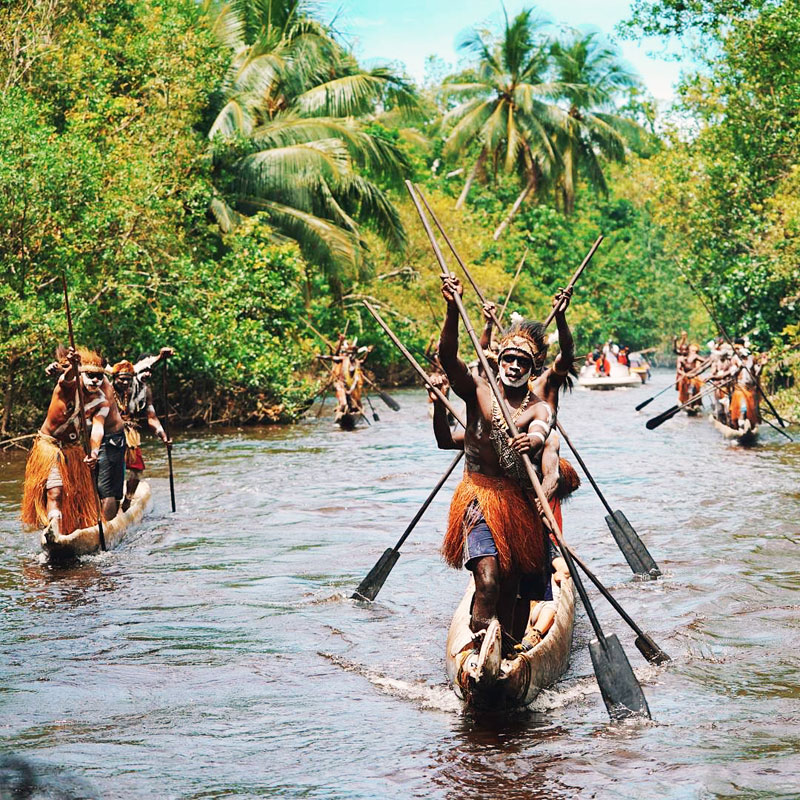
Declaring themselves as the descendants of God, this ethnic group lives in the deep unexplored regions of Papua, surrounded by lush forests and rivers of crocodiles flowing around their primitive houses.
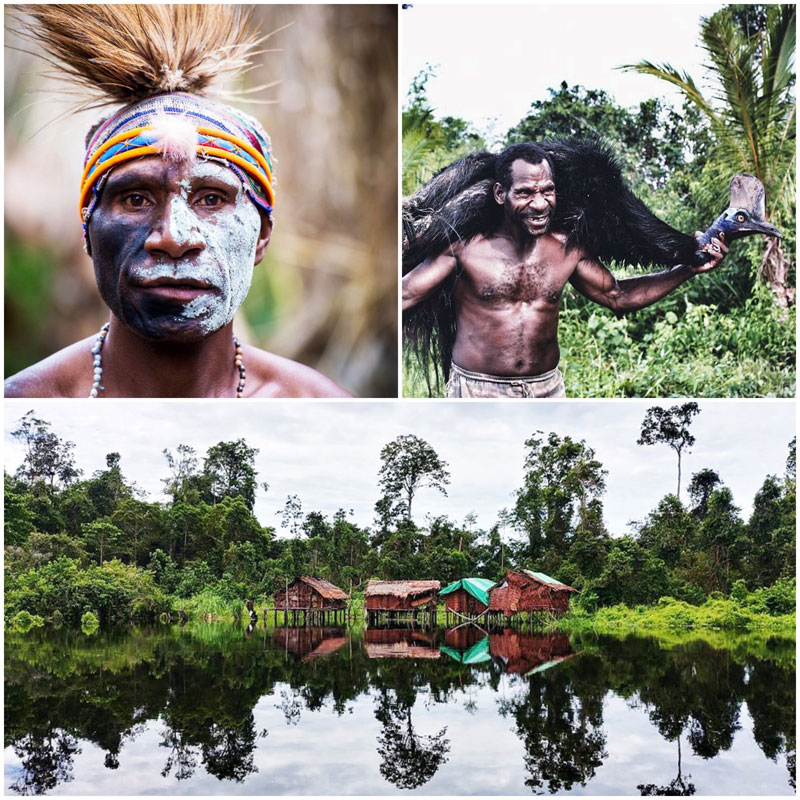
In the past, the men needed to hunt for the head of an enemy and offer the body for cannibalistic consumption in order to prove his manliness, but not anymore!
Today, the tribal men are less notorious and are known for their decorative headdresses that are adorned with bundles of feathers, representing a distinctive tribal group with its own traits, costumes and art.

With decorative skulls hanging around, we agree that it might be disturbing to visit the Asmats but the experience is nevertheless an eye-opening one as you immerse in a different way of life. A simpler one? We doubt so…
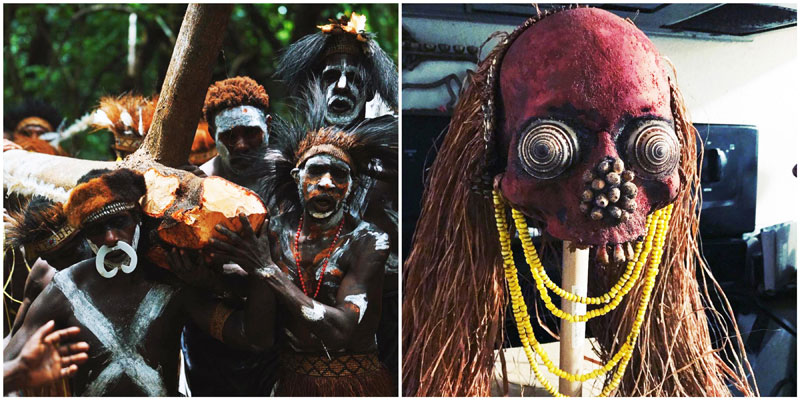
As Asmat headhunting finally ceased, the tribe spends most of its energy on hunting (for animals), sculpture-making and carving treasures for their annual “Asmat Woodcarving Festival”.
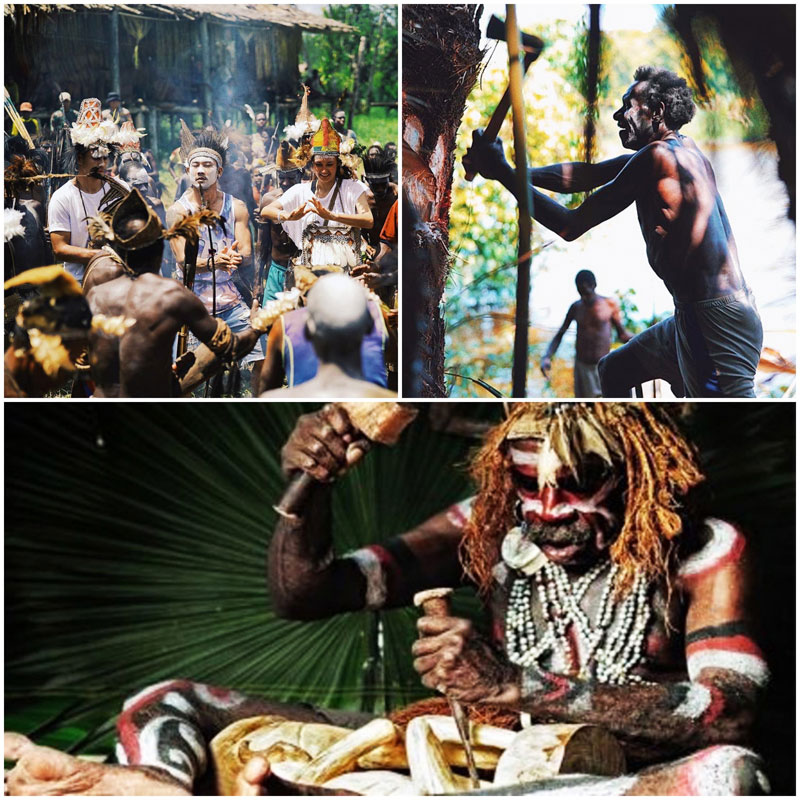
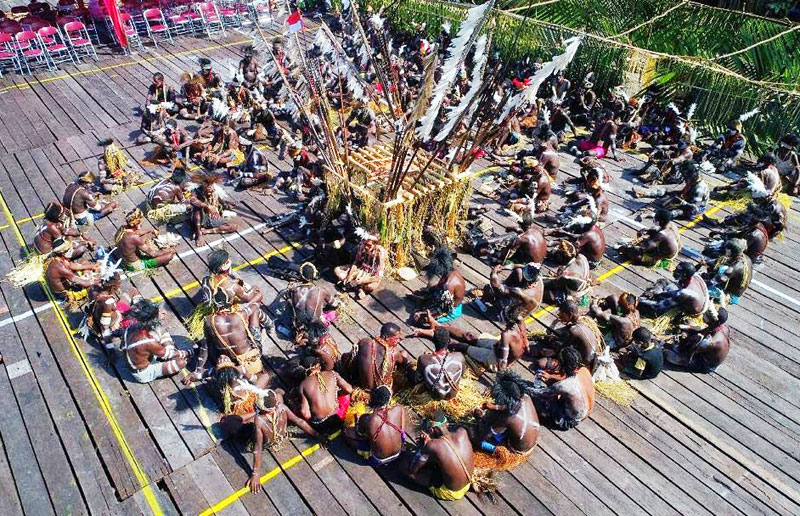
Asmat Tribe
Price Range: From USD 4700 per pax for 15 Days’ Tour for Asmat and Korowai Tribe (inclusive of domestic flights, all hotels, transfers, and meals)
Recommended tour guide/tour company: Papua Adventures (Note: All tours can be customized)
Getting there: From Mozes Kilangin, catch a flight to Ewer, and from Ewer, travel by motorized canoe for about 30 minutes to Agats area.
Location of village: Asmat Regency Kabupaten Asmat Papua Indonesia
Coordinates here
Recommended time to visit: October (Asmat Woodcarving Festival )
Safety level for travellers: 3/5
To pack: Insect repellent!
3. The sea gypsies with impressive diving skills – Bajau Tribe
If you think tribes only live in the deep jungles, you will be surprised to read about the Bajau people, who live right on the seas.
Right on the coastal areas of Indonesia, Philippines and Malaysia, the Bajau Tribe (also known as the sea gypsies) is a fascinating group of mobile maritime people who spend their whole life at sea, where the ocean is their playground and hunting ground!
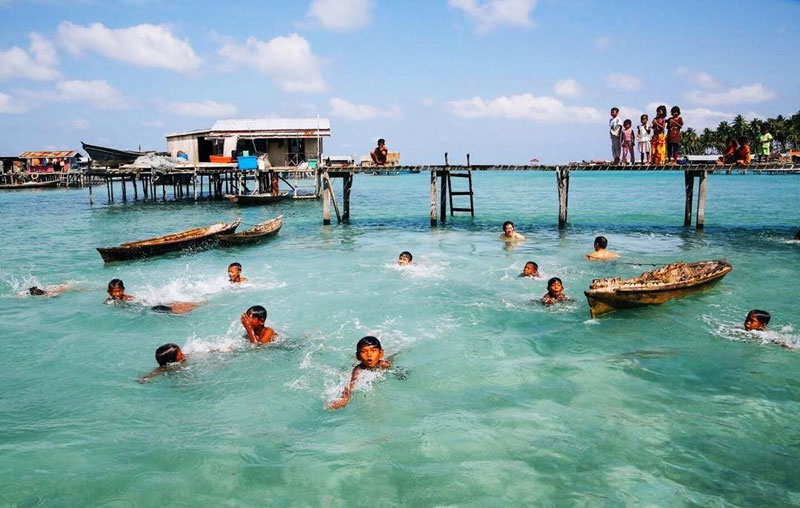
Living without the comforts of modern life, these boat dwelling nomads have no citizenship (they are stateless) and therefore have no right to public education.
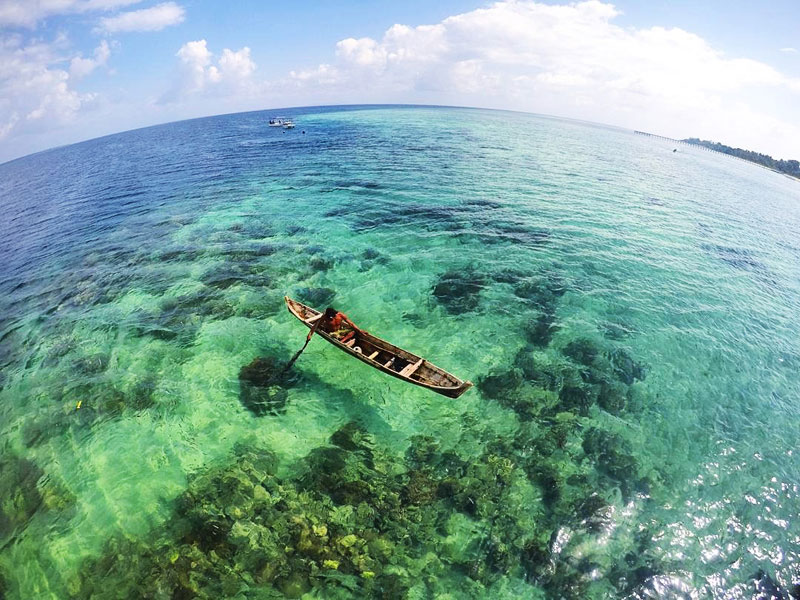
Believe it or not, the Bajau people have developed unique physical capabilities that enable them to see better, clearer, as well as dive and hold their breath underwater, longer than any of us can.
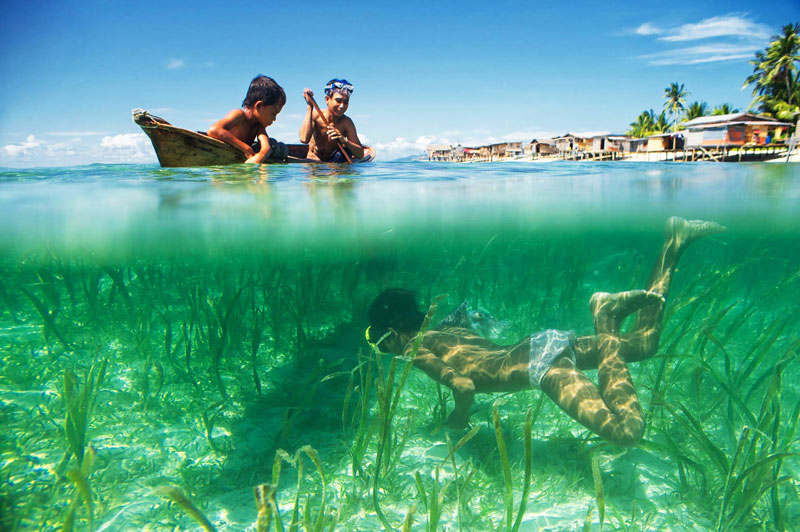
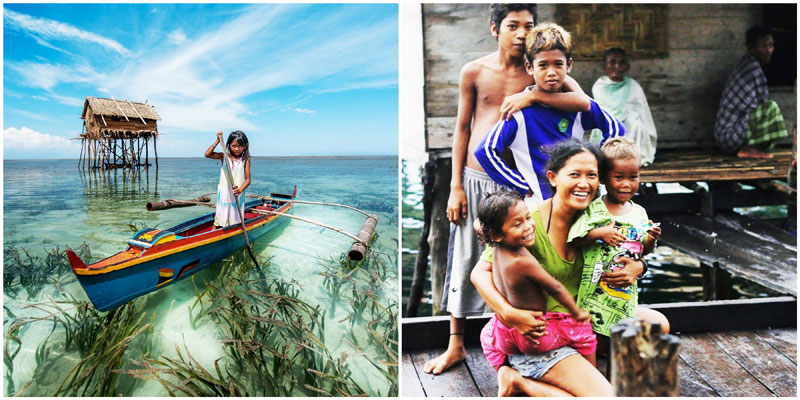
Being in the water is so important to them that they even deliberately rupture their eardrums at a young age, so you’ll realise that some of the older folks might be a little hard of hearing.
And when they are off hunting in the depths of the ocean, all they need are handmade wooden goggles, spear guns from boat timber, tyre rubber and scrap metal. These seem to be adequate enough for their military precision underwater.
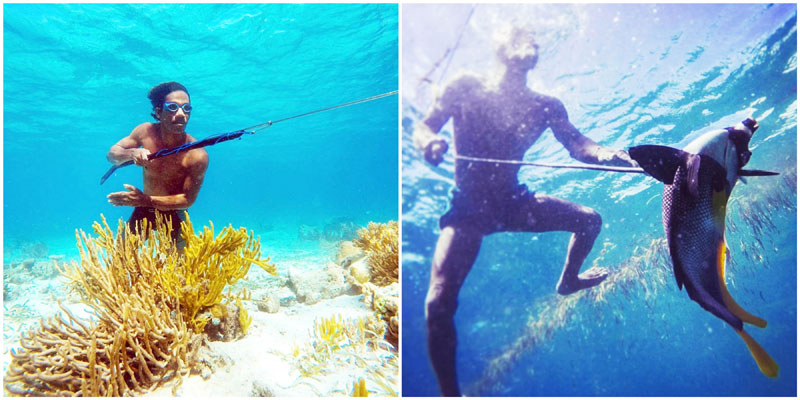
When they return to shore, they will surprise you with an array of crustaceans you never knew could be eaten!
Check out this insightful documentary on how the Bajau people lead their lives: Hunters of the South Seas
Bajau Tribe
Price Range: From USD 350 per boat charter per day
Recommended tour guide/tour company: Mr Seto (It is highly recommended to reach the tribe with the simple help of a fisherman for an authentic experience- Mr Seto will help to organise!)
Contact: +62 811 401 449
Getting there: You need to fly to Matahora Airport at Wangi-wangi Island. There are daily flights from Jakarta, Bali and Makassar. From the island, you need to get a boat (can a be a tour operator or a fisherman) and cruise all the way to the Bajau community. The boat trip to the Bajau tribe takes almost 2 hours.
Location of village: Sampela Bajau Village
Coordinates here
Recommended time to visit: March to November
Safety level for travellers: 5/5
To pack: Sunscreen!
4. No modern technology allowed, 4 hours from Jakarta – Baduy Tribe
Yes, this tribe rejects all forms of modern technology, such as phones, cameras and other electronics.
With an ultra-simplistic way of life, the Baduy Tribe live in voluntary isolation and receives no education, no healthcare and does not rely on any sort of government. They focus on a unique set of cultural and religious practices rather than laws and regulations from the government, thus effectively sealing their community off from the rest of the world.
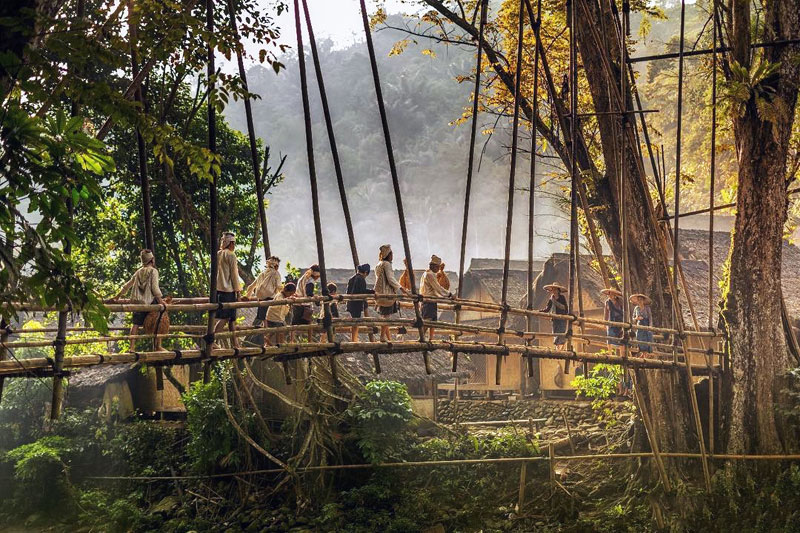

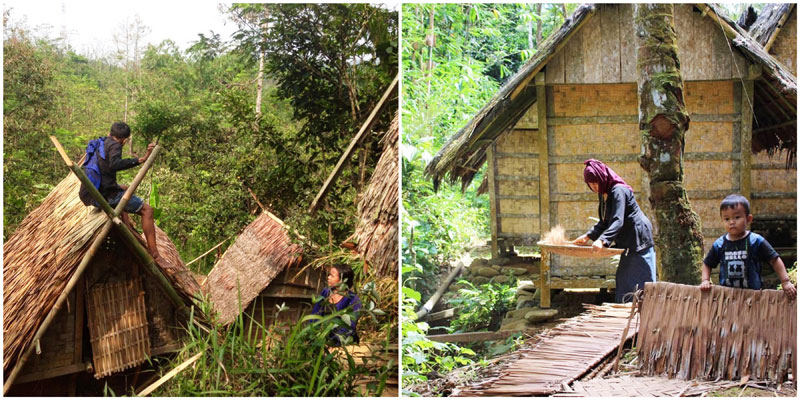
Visiting the Baduy Tribe is like a complete digital detox so do not expect loads of snapshots from there, a peek of the phone or camera will upset them!
Although the route to the Baduy community is scenic, it’s not an easy one – you will need to hike for around 10 kilometres before meeting them, and we strongly advise you to wear proper hiking shoes for safety purposes.
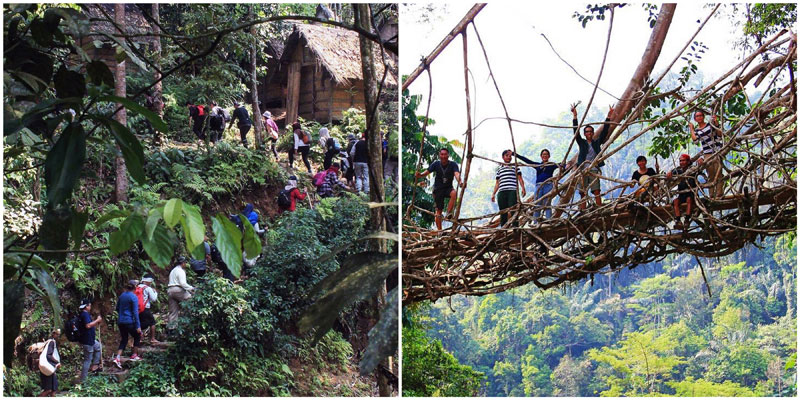
While there, consider contributing to the community by purchasing their handicrafts. A range of fabrics, scarves and accessories are for sale to visitors – you can even see the tribal women handmaking their pieces.
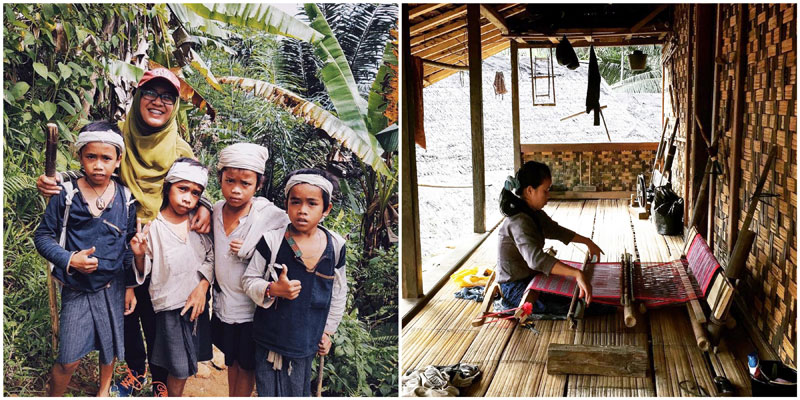
Take a peek into their lives: The Indonesian Tribe that rejects technology
Tip: While you can visit the Outer Baduy villages after obtaining a permit and provided you go with a guide, note that foreigners are NOT allowed to enter Inner Baduy, a sacred place and home to a mountain which, if not looked after, will mean the end of the world (according to the Baduy)!
Baduy Tribe
Price Range: From USD 175 per person (2D1N Package, inclusive of meals, accommodation, transfers)
Recommended tour guide/tour company: Adventure Tour Travel Indonesia
Contact: +62 819 1599 4208
Getting there: 4 hours’ drive from Jakarta (you need a guide to get you the requisite travel permit and to take you into the Badui forest. The permit is usually ready in less than an hour. Guides available along the way to the villages too.)
Location of villages: Kanekes, Leuwidamar, Lebak Regency, Banten 42362, Indonesia Coordinates here
Recommended time to visit: October- Baduy Festival
Safety level for travellers: 3/5
To pack: Insect repellent and hat!
5. A journey through the prehistoric Stone Age – Dani Tribe
Deep in the highlands of the Baliem Valley in Irian Jaya (a very remote land that’s difficult to reach), you will find a former cannibalist community – the Dani Tribe, who live with the Yali and Moni (two other indigenous tribes).
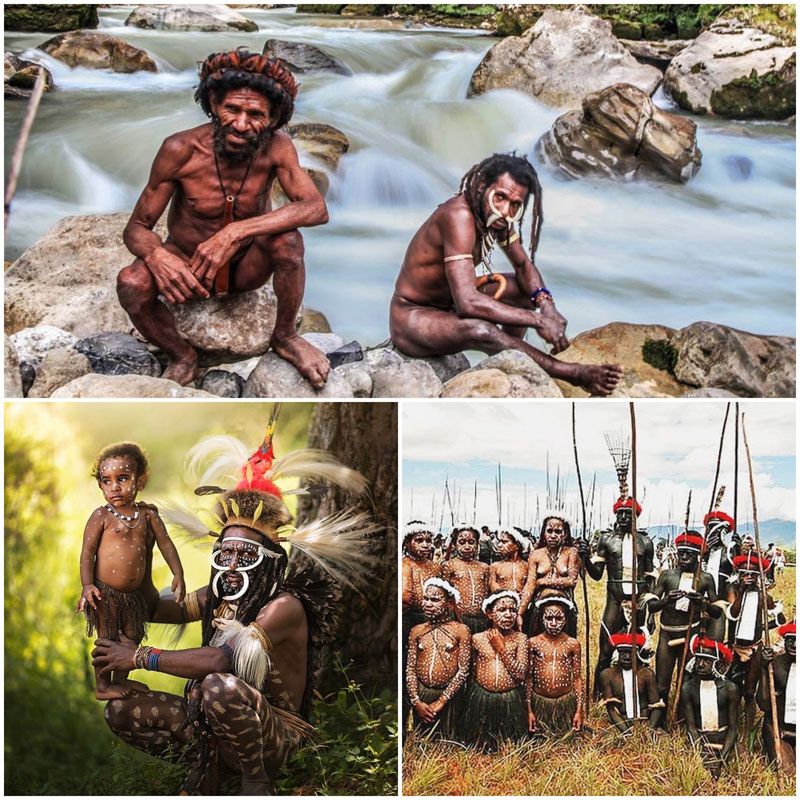
While modernisation has brought changes to the tribe, their basic beliefs and customs have been referred to as some of the most interesting.
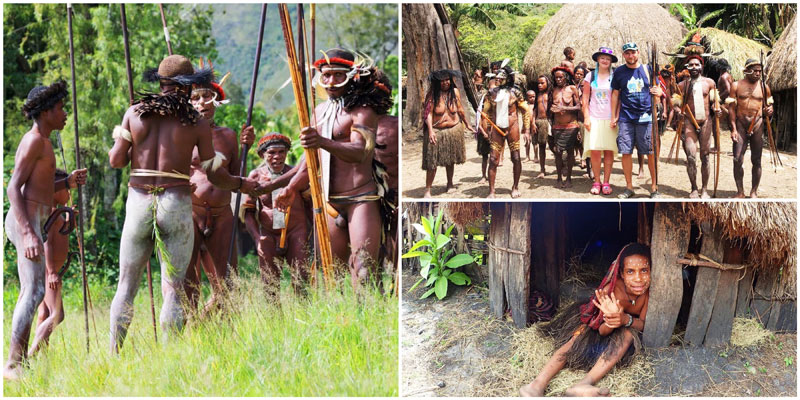
Till today, the Dani tribe believes in respecting the spirits of the ancestors. In a community where pigs play an important role, each celebration dedicated to ancestors is concluded by an ultimate pork feast.
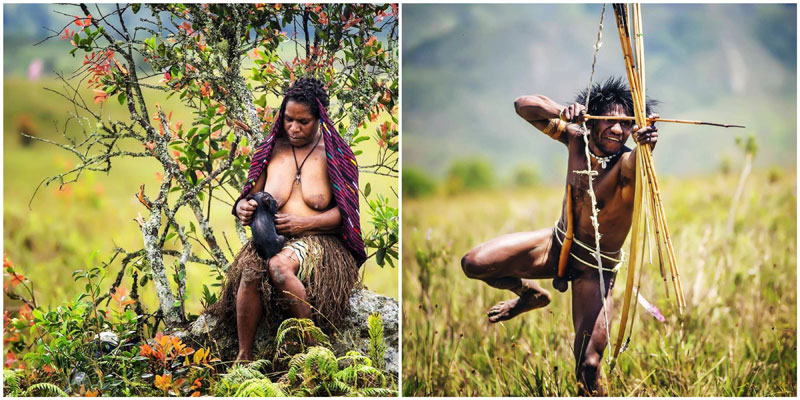
The tribe holds a liberal view towards clothes, which is considered as another unique custom of theirs – while visiting, you will notice men wearing an unusual piece of underwear commonly known as the Koteka (a sheath to cover genitals made from dried out gourd).
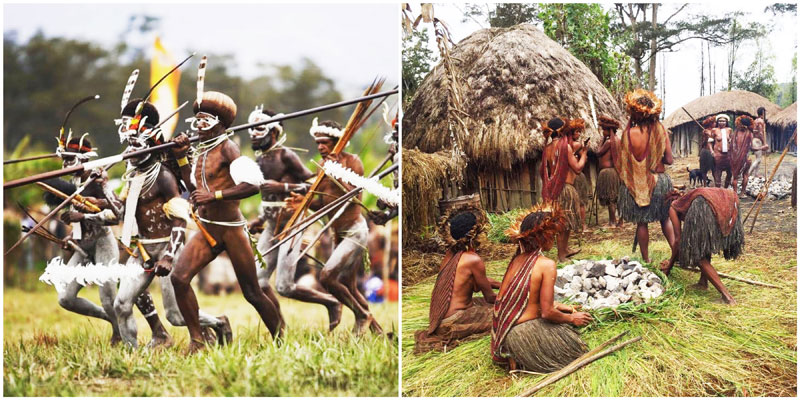
The Dani tribal women are extraordinary too – notice some of them have severed fingers fingers due to an ancient funeral practice where women voluntarily mutilate their fingers when a family member dies, as a form of mourning. This tradition is now banned.
With such unique traits and customs, the Dani Tribe is surely fascinating to interact with, and you should consider visiting in the month of August – this is when you get to witness the annual Baliem Valley Festival held in Wamena. Besides the rich experience you’ll get as you encounter the tribal cultures, it’s also a prime time to sample their delicious earth cooking too!
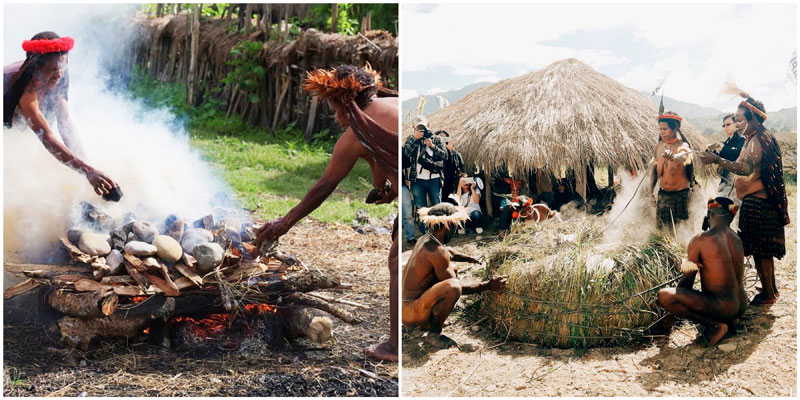
Note: On this special occasion, the various tribes living around the Baliem Valley area send groups of representatives to showcase their traditions, dances and cultures, and festivities end with a series of mock battles.
Dani Tribe
Price Range: From USD 505 per person (5 Days’ Tour, inclusive of meals, accommodation, transfers and other fees)
Recommended tour guide/tour company: Jefalgi Papua
Contact: [email protected]
Getting there: Fly to Jayapura Papua and catch domestic flight (Trigana Air) to Wamena before driving to the Baliem Valley.
Location of village: Wamena Jayawijaya Regency Papua Indonesia (Coordinates here)
Recommended time to visit: August- Baliem Valley Festival
Safety level for travellers: 3/5
To pack: Insect repellent and water bottles!
6. 150-cm community in the mountains – Yali Tribe
Although the Yali tribal people are neighbours of the Dani Tribe and they have many similarities, there’s one significant difference that makes the Yali stand out – the height of the men.

The men are known for their pygmy origins, standing up to a bare 150cm height (though there are exceptions).
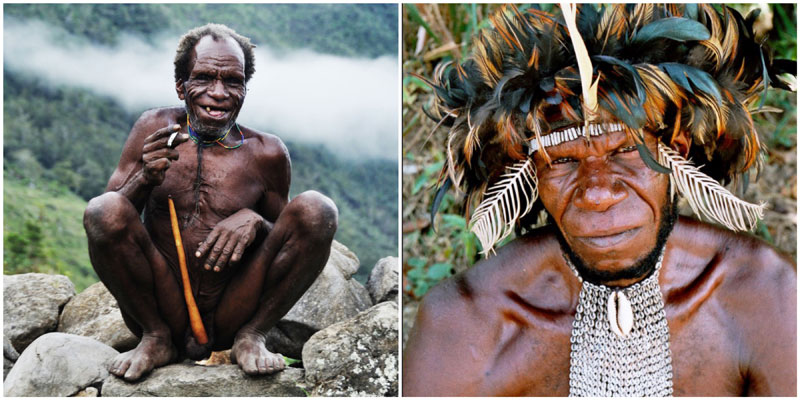
You will need to be a little adventurous to visit the Yali Tribe, their community is one that is difficult to get to and trekking there can be very strenuous.

They live in a more mountainous area where lush rainforest has taken over, making it an isolated yet challenging village to access.
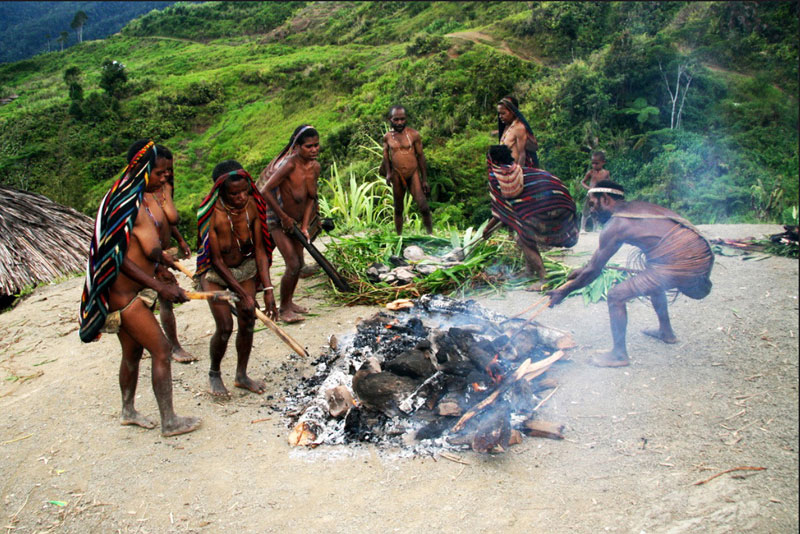
The Yali Tribe has long been notorious for their dreaded cannibalistic practices – they used to eat their enemies and grind their bones to dust before throwing them away in the forest of the valley.
Like the Dani Tribe, the Yali men are accustomed to wearing gourds that cover their genitals while women are left bare-breasted with short and small skirts. Every four years, a layer is added to their skirts. Once they have four layers to their skirts, it means that the girl is old enough to get married.

Note: Although visiting this tribe would be a truly fascinating and wonderful experience, we highly recommend going with a tour guide for safety reasons. Past travellers have shared experiences of how the tribe did not want to let them leave.
Yali Tribe
Price Range: From USD 1800 per person for 11 Days’ Tour (Domestic flight + All hotels + All transfers + Meals, Travel Permit and more included)
Recommended tour guide/tour company: Travel Papua
Contact: +62 852 3751 5517
Getting there: Fly to Jayapura Papua, Catch a domestic flight to Wamena, followed by a chartered flight to Yali Valley Angguruk
Location of village: Yalimo Regency Yali Valley Angguruk (Coordinates here)
Recommended time to visit: Safety level for travellers: 3/5
To pack: Insect repellent and trekking shoes!
7. The greatest ocean hunters – Lamalera Tribe
Known as one of the last two whaling villages of Indonesia, the Lamalera Tribe has been hunting the oceans for numerous centuries till now, and though this practice is illegal in the rest of Indonesia, the tribe has been granted special permission from the government to carry on with their ocean hunting rituals.
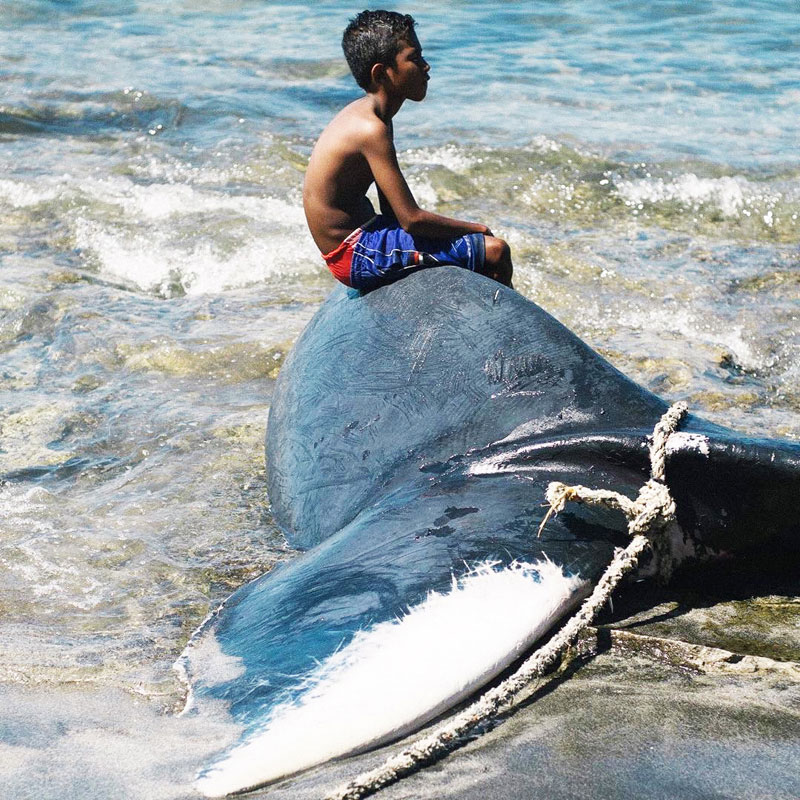
While they are allowed to do so for their survival and preservation of culture and traditions, they are strongly forbidden to take advantage of this permission for commercial sales, with conservationists watching closely.
For their hunting, the Lamalera Tribe uses very few modern technologies; they still focus on what we call ‘sustainable hunting’ to kill up to 20 sperm whales per year. A few traditional wooden boats, harpoons and ropes will do the job.
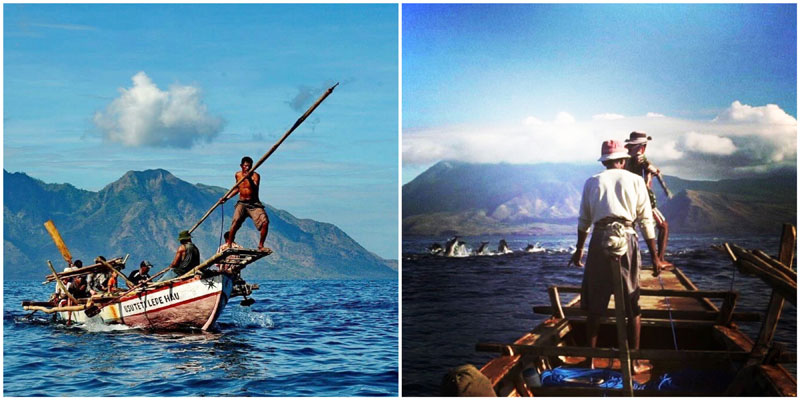
Visitors find it specially impressive to assist to the Lamalera Whale Hunting Festival in early May and June. Watch the tribal men throw their full body into the sea and fiercely spike their prey with their long bamboo spear!
A fruitful hunt at the Lamalera Tribe does not only involve sperm whales but dolphins and mantas too.
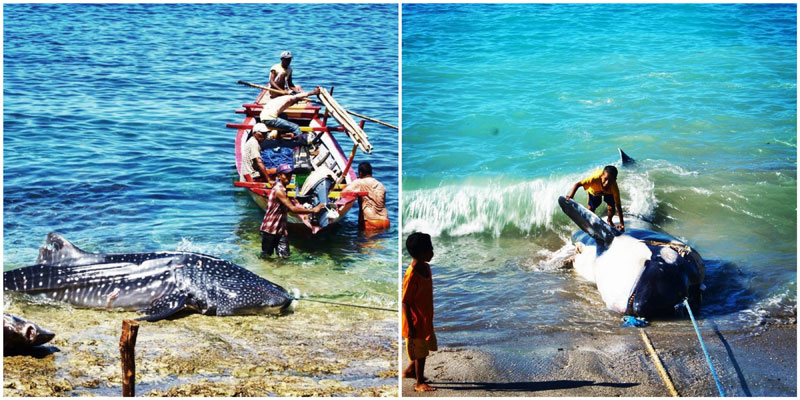

Along with the next village, the Lamalera Tribe summarises their day through a barter system – they exchange their flanks of sea animals for vegetables and rice.
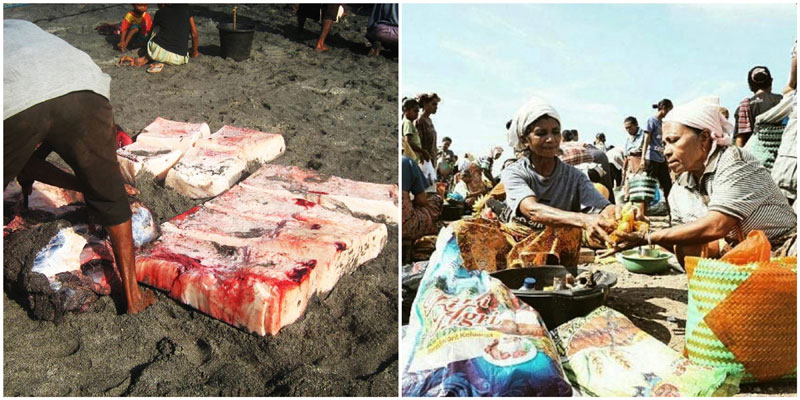
Lamalera Tribe
Price Range: From Rp. 6,500,000 per person (For 3D2N Package including transfers, accommodation, full board meals and whale hunting tour)
Recommended tour guide/tour company: Mr Anton
Contact: +62 821 4487 3755
Getting there: Fly from Bali or Lombok to Maumere at the Frans Seda airport. From Maumere, go to Larantuka by bus. From Larantuka, the only way to get to Lamalera is by ferry to Lewoleba (which is available every day), or directly to Lamalera from Larantuka via a weekly ferry service.
Location of village: Wulandoni Lembata Regency East Nusa Tenggara Indonesia (Coordinates here)
Recommended time to visit: May to September – Whale hunting season
Safety level for travellers: 5/5
To pack: Sunscreen, hat and water bottles!
8. One of the happiest tribes of Indonesia – Abui Tribe
Welcome to one of the happiest tribes of Indonesia.
Once you reach the village of Takpala, you will be greeted with a traditional dance and women chanting along. Visiting the Abui Tribe would be an enriching experience as you get to immerse in a well-preserved tribal culture.
Look out for Mama Amalia – she is known for all the good she does for the tribe. Needless to say, she’s extremely hospitable too!
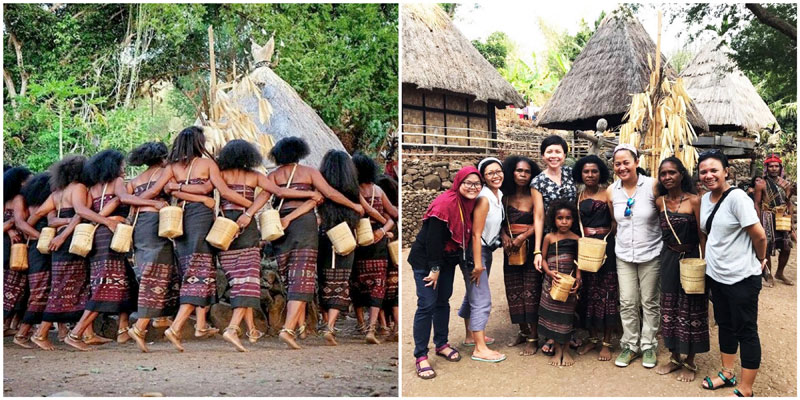
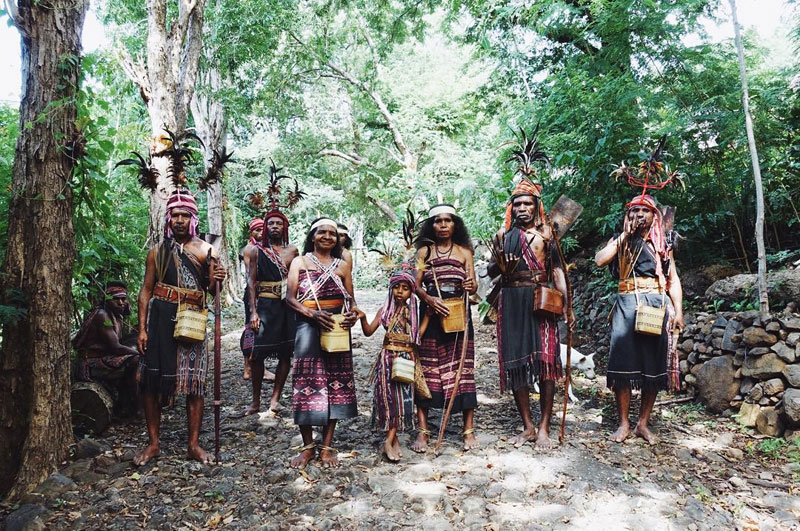
She has also helped to contribute to the preservation of the Abui language as well as its oral history by writing fables that actually got published! If you enjoy tribal fables, you can read them here (written in Bahasa Indonesia).
Sadly, the efforts from Mama Amalia are not enough. The tribe is being pressurized by other Indonesians to give up on the Abui language and adopt Bahasa Indonesia for daily use. As a result, the language is slowly dying.
Due to the development of their village for visitors, it seems that the Abui Tribe is one of the most approachable tribe in Indonesia, but they remain quite poor and living conditions appear harsh as kids have noticeable signs of malnutrition.
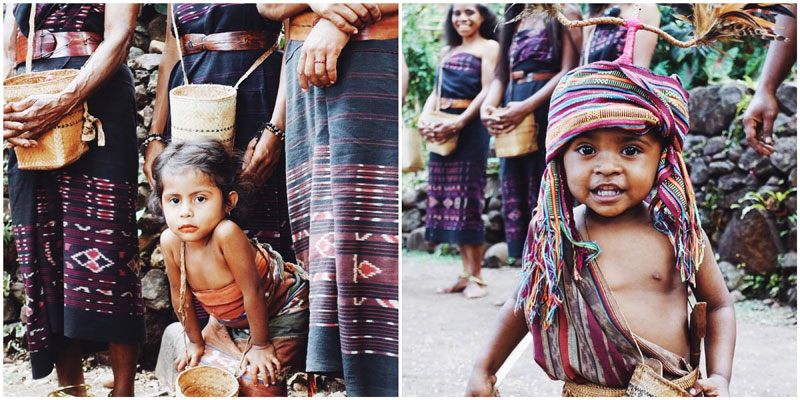

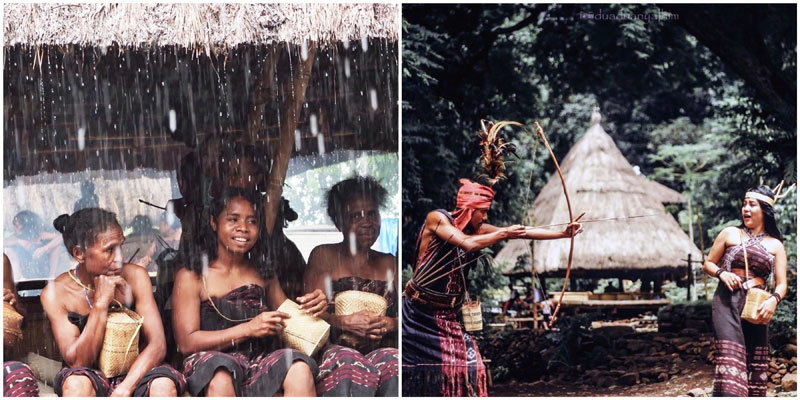
Nevertheless, the people are very generous and would be more than happy to share their dinner with you, as they hold a strong belief that you do not have what they have…
Abui Tribe
Entrance fee: Rp. 400,000 per person (Approximately USD $29)
Recommended tour guide/tour company: Dinas Kebudayaan dan Pariwisata Kabupaten Alor
Contact:+62 0386 21160
Getting there: 13 km drive from east Kalabahi. Look for the “Desa Adat” sign along the main road.
Location of village: Dusun III Kamengtaha, Lembur Barat sub-District, Alor Tengah Utara District, Alor Regency, East Nusa Tenggara (Coordinates here)
Recommended time to visit: October to April – Harvesting practices
Safety level for travellers: 5/5
To pack: Sunscreen, hat and water bottles!
9. Former headhunters turned nomadic farmers – Dayak Tribe
The Dayak Tribe is known in Malaysia and Indonesia for leading a nomadic farming life.
But in modern society, most of the young Dayak men and women leave their traditional longhouses on the bank of Makaham River before getting married, to head down the urban cities to study and work.
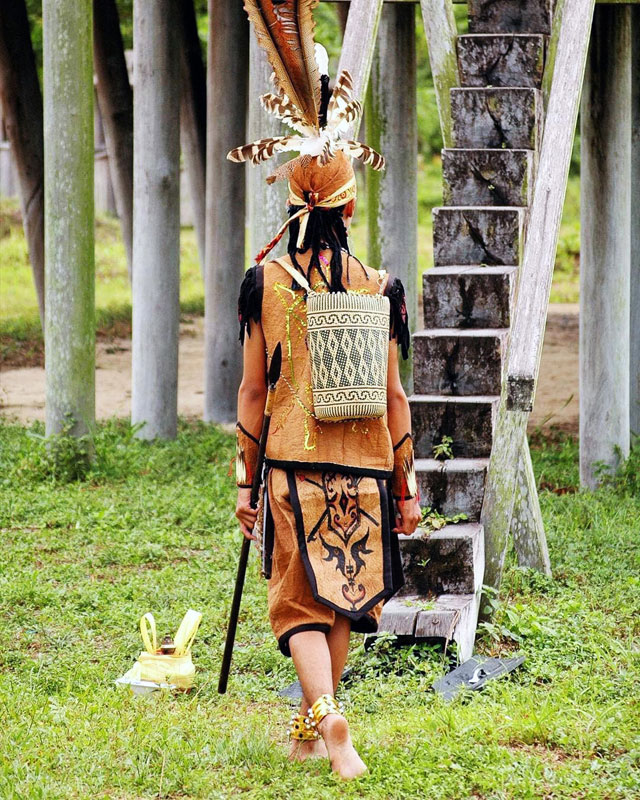
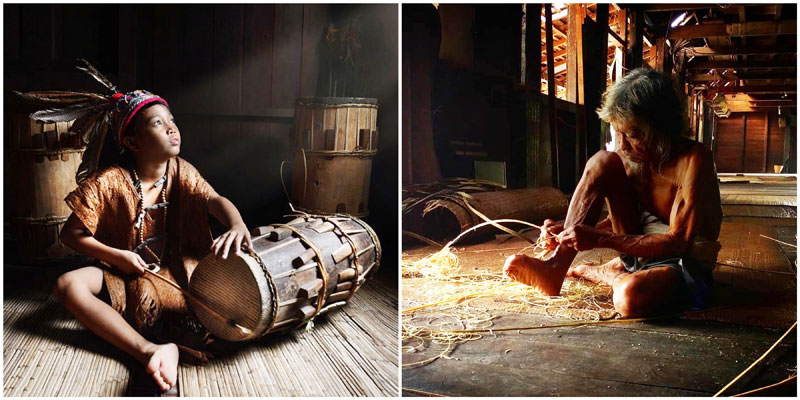
Besides being former headhunters, what is intriguing about the tribe is their spiritual beliefs in a supernatural power – an invisible force referred to as “Semangat”.
“Semangat” is believed to rule the lives of humans as well as plants and animals! However, in today’s society, many Dayak people have adopted Christianity.
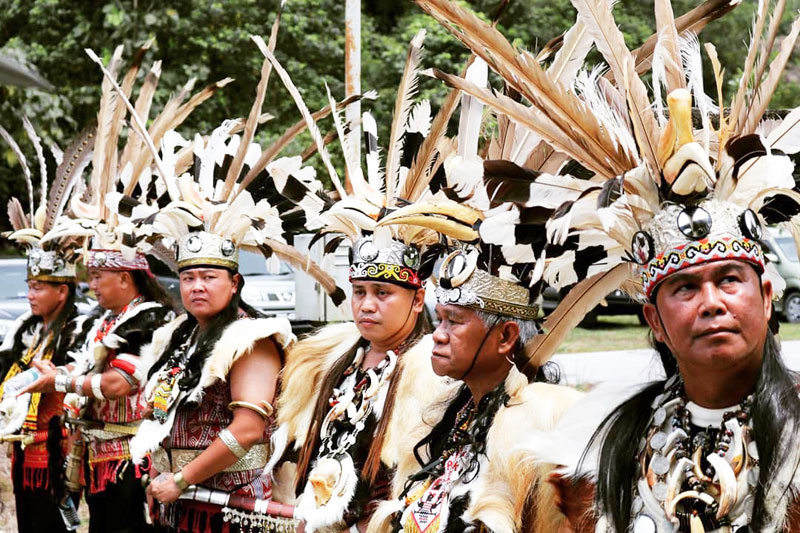
Both men and women of the tribe are easily recognised by their incredible tattoos and large earrings that deform their earlobes, but their colourful clothings adorned with insect wings, mother-of-pearl pieces, feather dressings as well as animal teeth don’t go unnoticed!
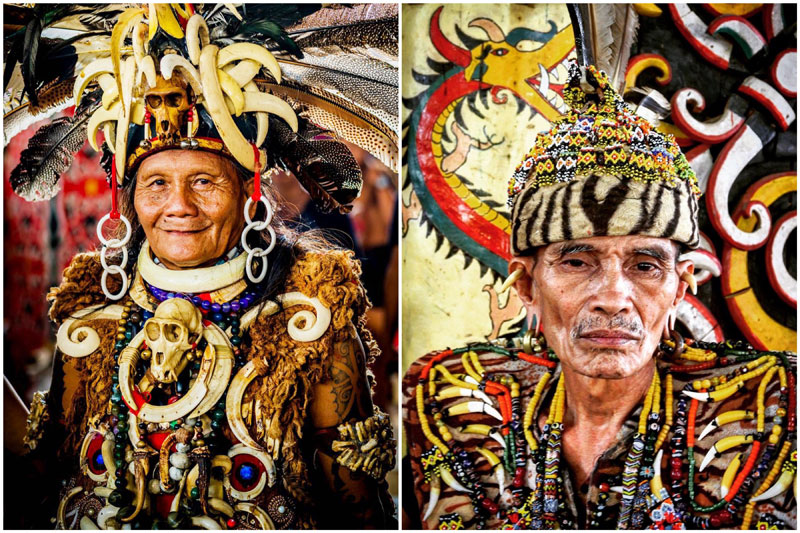
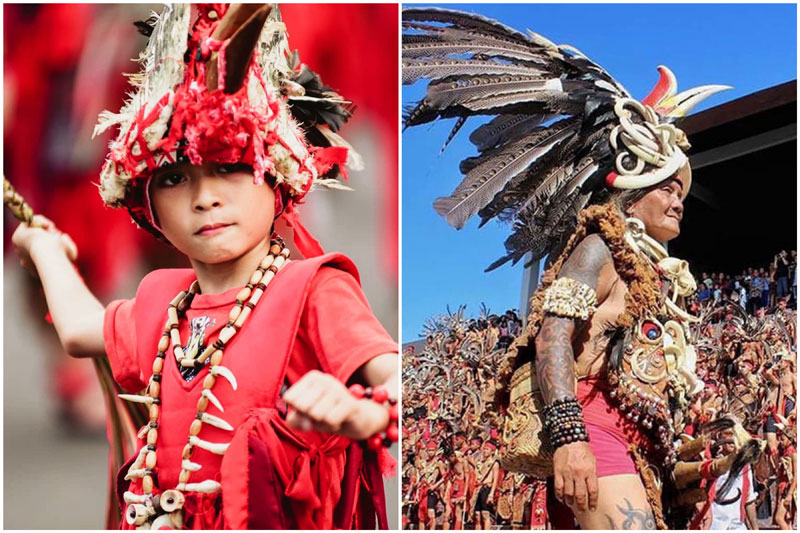
Visiting the Dayak village is partially what keeps their indigenous traditions alive, so know that the money you invest in this trip is worth every penny, and it guarantees a real cultural immersion!
Note: While a guide is not necessary (the tribal people are very welcoming towards visitors and they are thrilled to present their culture to foreigners), please respect their taboos and beliefs!
Dayak Tribe
Price Range: From Rp. 5,400,000 per person (4-Day Mahakam River Houseboat Cruise Tour) (Approximately USD $391.50)
Recommended tour guide/tour company: Borneo Tour Gigant
Contact: +62 81 2584 6578
Getting there: Fly to Balikpapan and head to Loa Janan to catch a boat to Mahakam River
Location of village: Mahakam River (Coordinates here)
Recommended time to visit: February and August – Dry season
Safety level for travellers: 5/5
To pack: Your politeness and genuine self!
10. Dracula women and traditional badass tattoos – Mentawai Tribe
Due to centuries of isolation, the Mentawai Tribe has established a community that builds intimate relationships with the forest.
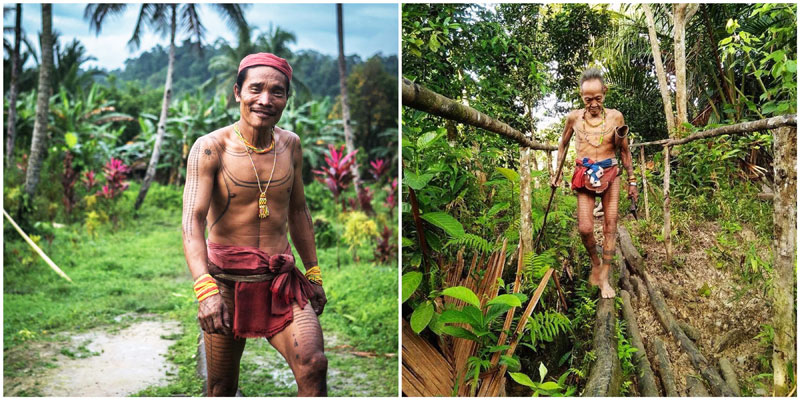
Known as one of the oldest tribes in Indonesia, the Mentawai people hold traditional beliefs steeped in animism, though many converted to Christianity throughout the years. The tribe believes that everything that surrounds us has a spirit and soul. Then again, who knows…?
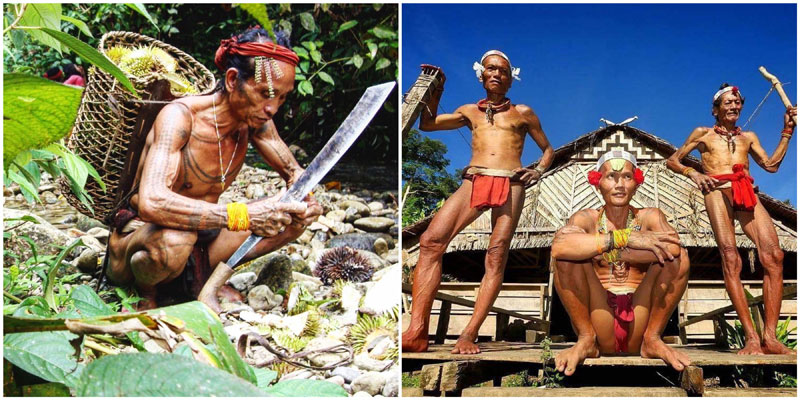
One of the experiences visitors look out for when visiting is getting a traditional tattoo from the local shaman who uses natural ingredients, such as a charcoal mix.
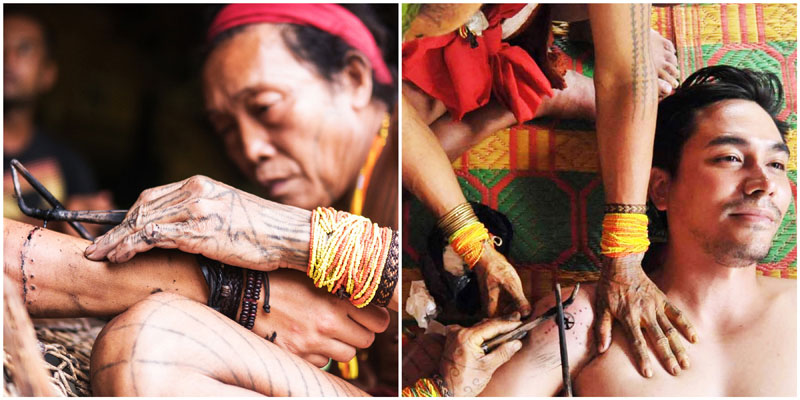
More than just a creative piece of art, the tattoos of the Mentawai Tribe actually symbolize the sacred balance between foresters and nature.
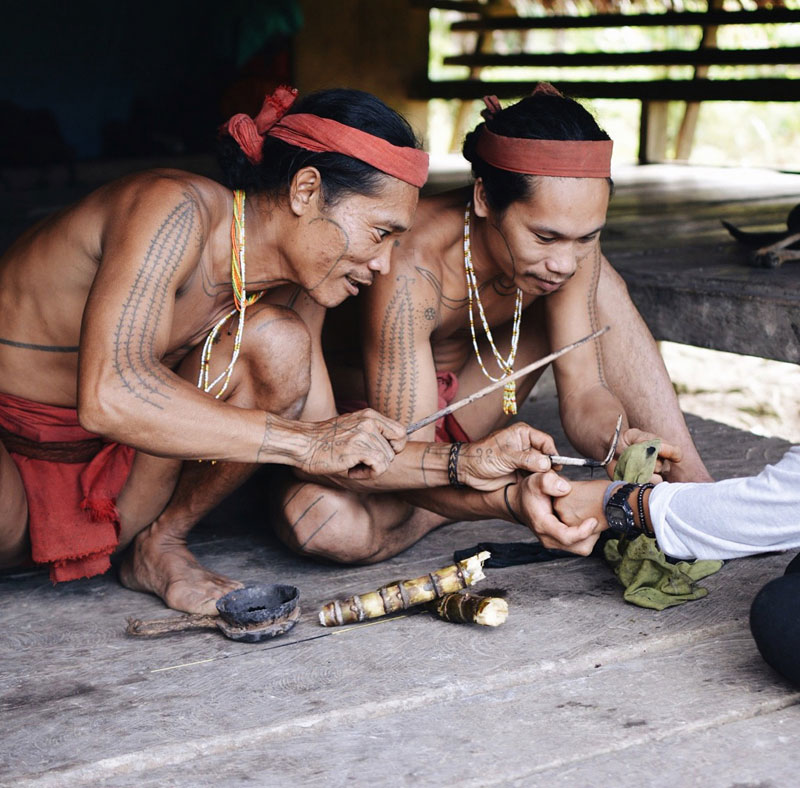

Another fascinating ritual is the teeth sharpening ceremony (called Kerek Gigi) among women of the tribe. In order to be considered beautiful, the tribal women get their teeth sharpened soon after they hit puberty or right before getting married. And the most amazing thing is, they go through this painful process without any form of anesthesia.
Watch this intriguing documentary about their lives: The Mentawai
Mentawai Tribe
Price Range: USD $380 (For 5D4N Package including meals, accommodation, transfers)
Recommended tour guide/tour company: Mr Heru
Contact: +62 81 2615 13662
Getting there: From Padang, take a fast boat to Muara Siberut (2 hours), and transfer to the harbour for another 2-hour boat ride to Mentawai Tribe
Location of village: Siberut Island Pulau Siberut Kepulauan Mentawai West Sumatra Indonesia (Coordinates here)
Recommended time to visit: Anytime except August due to bad weather conditions
Safety level for travellers: 5/5
To pack: Your politeness and genuine self!
11. Forced to lose their faith and nomadic life – Orang Rimba
Traditionally leading nomadic lives, the Orang Rimba used to survive on hunting for wild pigs for food. Tribal kids could be seen roaming around the forests bare-chested, guided by spirits, gods and goddesses.

But in recent years, their lives have undergone many changes.
With their faith and way of life not being recognised by the local government (especially their practices of hunting and eating wild pigs, which is strictly forbidden for Muslims, and Indonesia is a Muslim-dominated country), the Orang Rimba community has been subject to obligatory conversions to state-approved religions, primarily Islam.
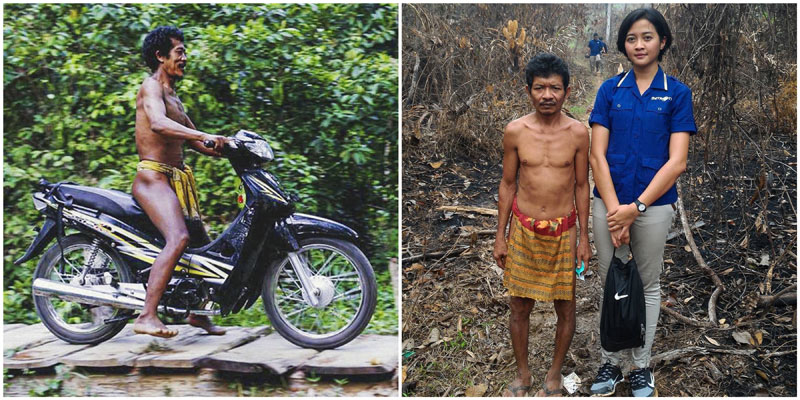
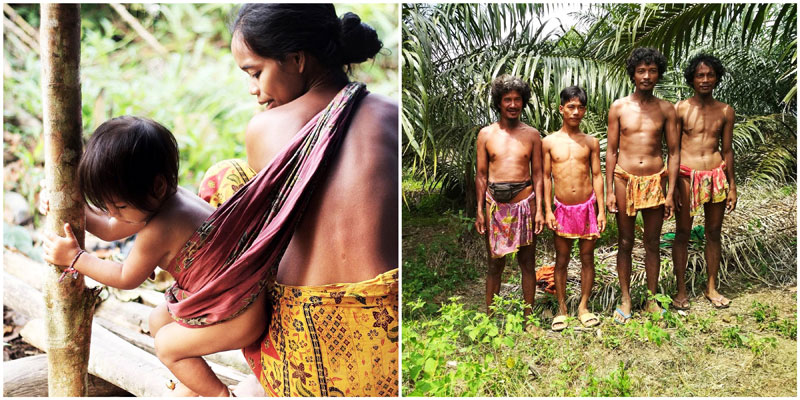
Conversion to recognized religions has been the only way for them to be eligible for equal opportunities available for those in the “outside” world.
Now, you can spot the kids instead dressed in white, sitting in rows and devoting themselves to their new religion. The Orang Rimba also have to strive to find new homes due to the ongoing developments for palm oil plantations.
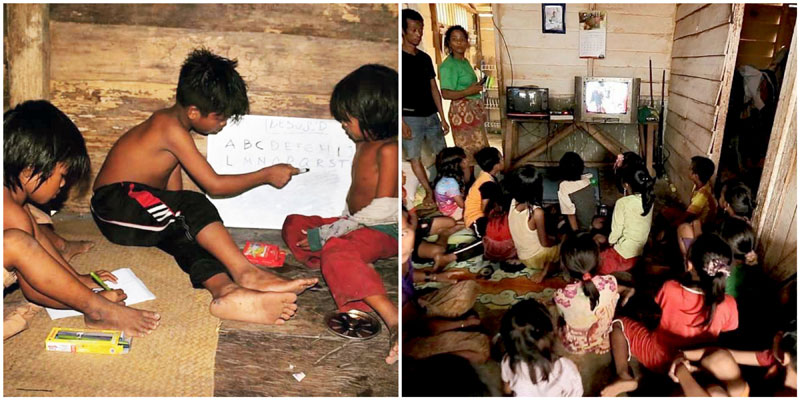
Although many of them now own rubber plantations, the Orang Rimba tribe still tries to maintain their nomadic lives and carry on with their hunting practices while the government takes over the faith of the vulnerables – the kids.
Orang Rimba
Getting there: Fly to Jambi. From the airport, drive for 4 hours to Bukit Duabelas National Park
Location of village: Bukit Duabelas National Park (Coordinates here)
Recommended time to visit: Anytime throughout the year (Do so before they disappear from the forest!)
Safety level for travellers: 5/5
To pack: Your politeness and genuine self!
12. The lesser-known Balinese culture that sacrifice human blood – Bali Aga/Bali Mula
Discover another mystical side of Bali – Bali Aga villages are unlike other parts of The Land of the Gods.
With a set of unique traditions and ways of life, the tribe is known to be of a secretive origin who are completely centered on the worship of powerful forces of nature. Linked to a few aspects of Hinduism, the Bali Aga community also practises cremation ceremonies during their funeral rituals, but they remain unlike any other culture on the island.
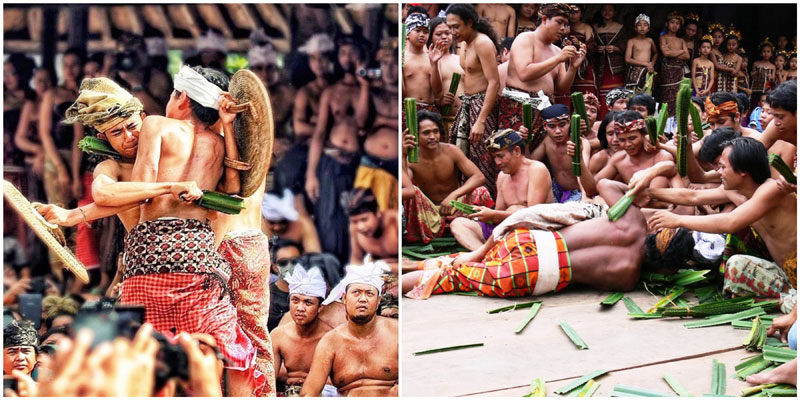
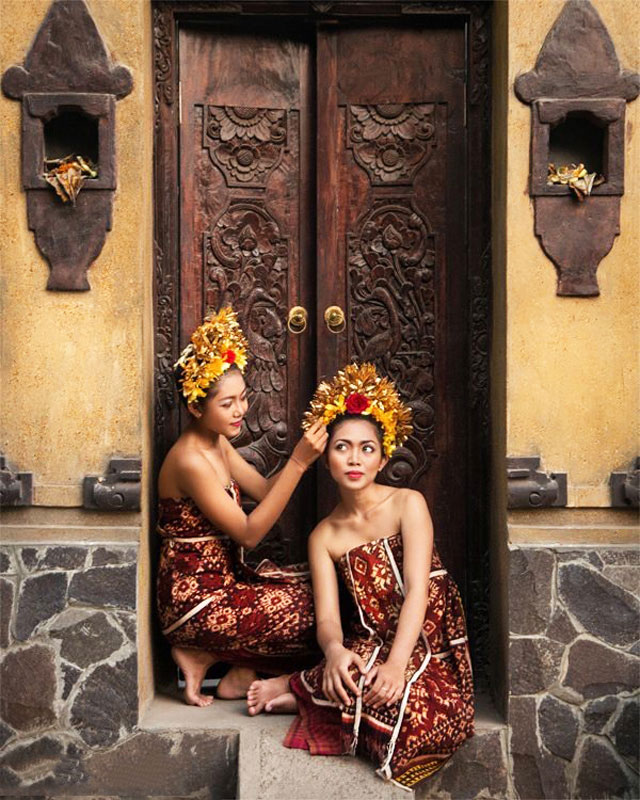
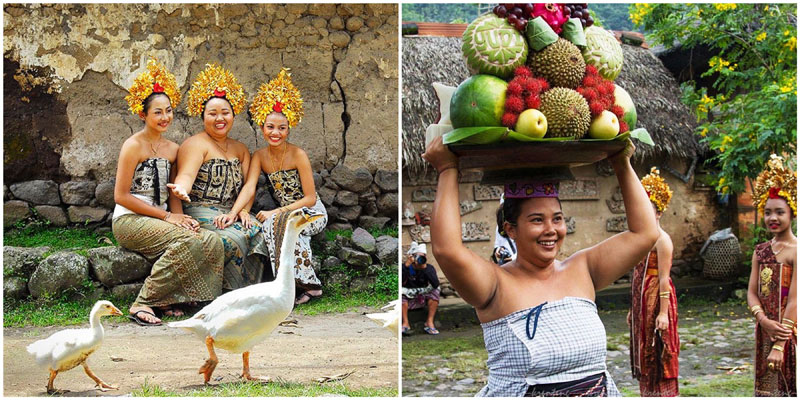
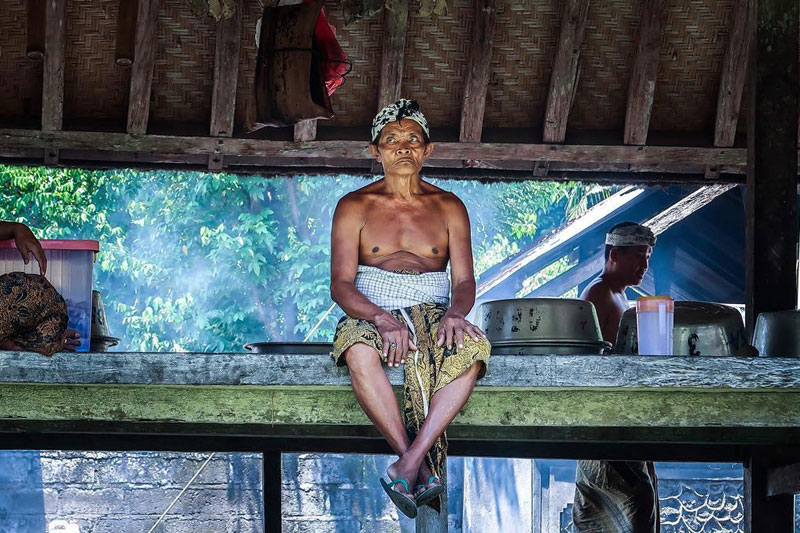
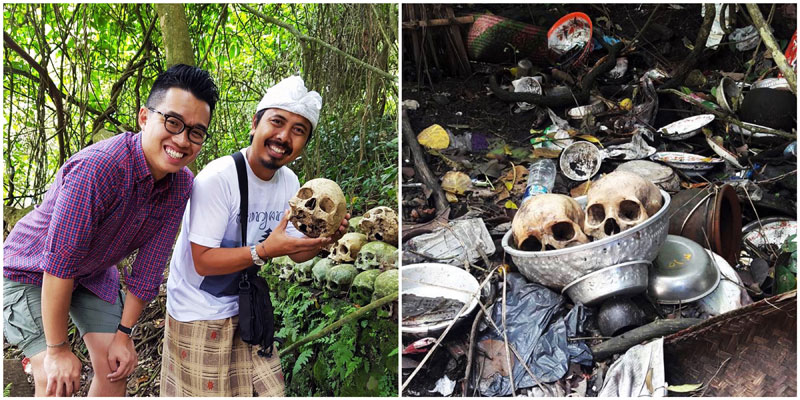
You can find this tribe in the villages of Tenganan and Trunyan, which are located in Candidasa and Amed respectively.
You might want to visit between the months of May and June to catch their annual native celebrations like the Makare Kare – a three-day combat of the tribe members. The ritual involves a fierce competition where fighters are armed with razor-sharp weapons that can greatly injure and cause great pain and bloodshed.
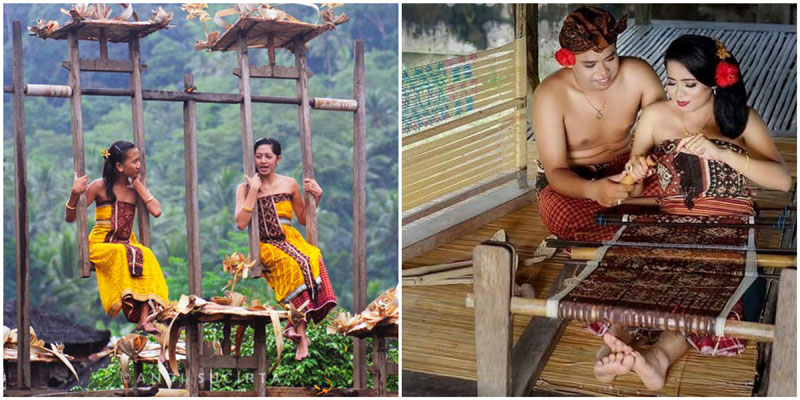
Note: Due to their unique set of customs and traditions, the tribe is occasionally not welcoming of visitors and exploring here unattended can result in violence if the traveler is unaccustomed to the ways of the Bali Aga.
Bali Aga/Bali Mula


 Bahasa Indonesia
Bahasa Indonesia 简体中文 (Chinese)
简体中文 (Chinese)